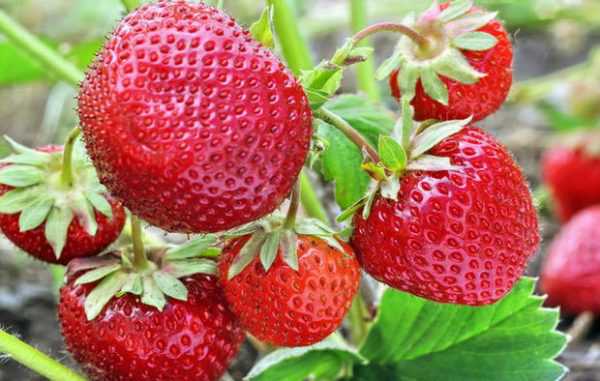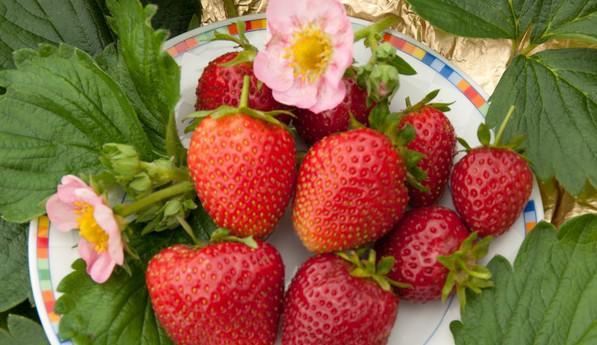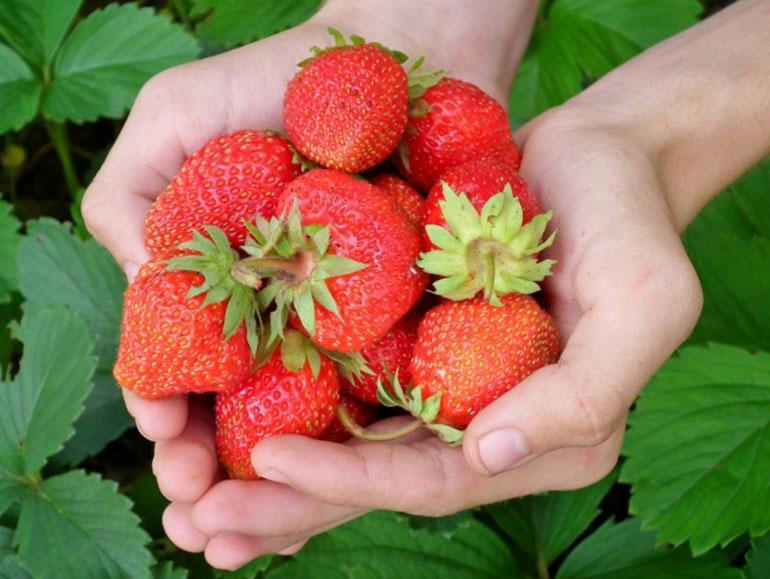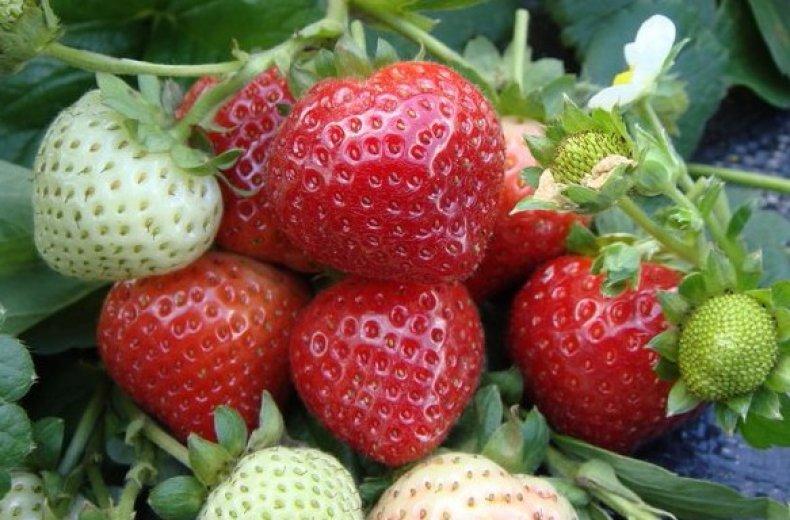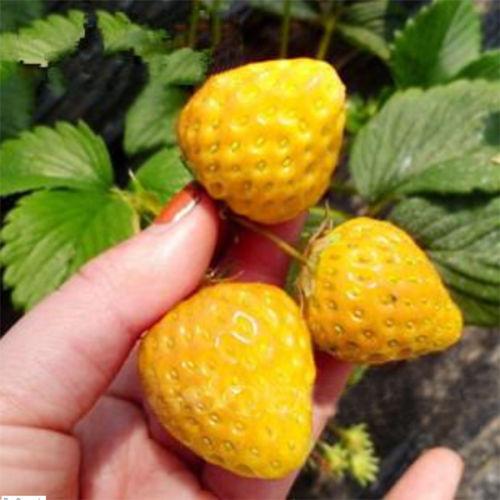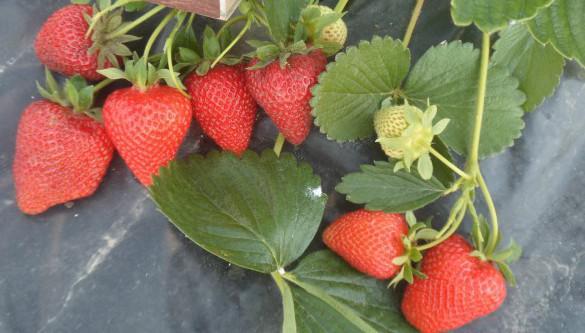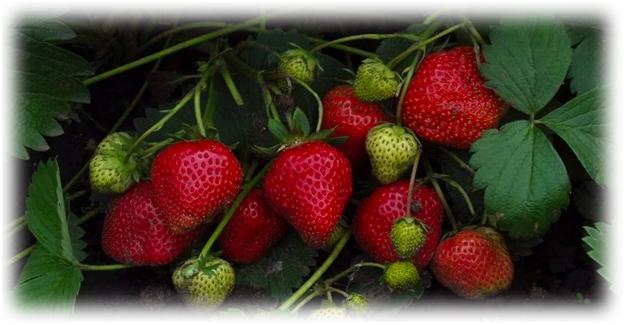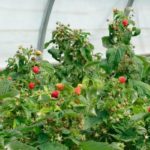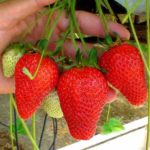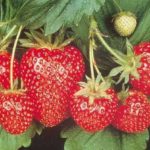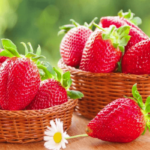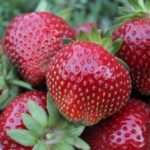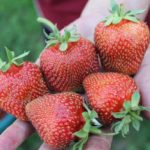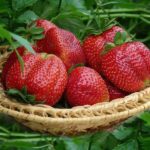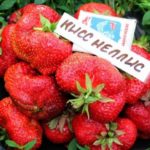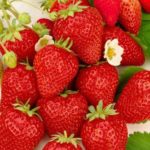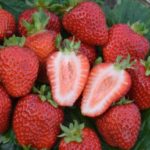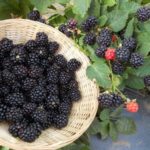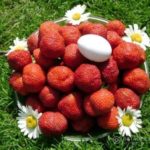Strawberries are considered one of the most commonly grown berries in summer cottages and garden plots. Caring for the crop is associated with difficulties in organizing space due to the long shoots of strawberries. Recently, summer residents have been giving preference to varieties of strawberries. They have high yields. In addition, when growing beardless varieties, there is no need for regular monitoring of the condition of the shoots.
Features of beardless strawberries
Strawberries of this type have been grown in garden plots for several years. Space saving is considered a special feature when growing. It is recommended to place bushes near other fruit and berry crops, in areas that are limited by any buildings or beds.
Strawberry varieties are used for decorative landscaping on terraces or gazebos in summer cottages. Among the many varieties of varieties, there are large-fruited and small-fruited ones; they are chosen in accordance with individual preferences.
Pros and cons of berries
Beardless strawberries have advantages and disadvantages. They are called remontant strawberries, a designation for the ability of a crop to bear fruit more than once annually. Remontant strawberries lay fruit buds during daylight hours of any length. The only condition is to ensure a light period for laying of at least 6 hours.
The main advantages of bare strawberries:
- high yield;
- minimum requirements for conditions for growth and fruiting;
- taste qualities of berries;
- wide selection of varieties;
- limited planting space.
Among the disadvantages are the need for frequent planting, as well as difficulties in carrying out propagation in order to preserve a certain variety.
Advice! When growing beardless strawberries in the southern territories, one should take into account its intolerance to high air temperatures.
Selection of the best varieties of remontant strawberries
Among the variety of varieties of beardless strawberries, gardeners choose between large-fruited and small-fruited types. Each of them has different characteristics and has unique features.
Yoke
The berry owes its name to its appearance.Due to the small inflorescences, as well as the presence of small small leaves, it has a lush, flirty appearance. It is customary to grow coquette in high beds, which facilitates the harvest of a harvest uncontaminated by the earth.
Fruit characteristics:
- large, cone-shaped;
- taste sweet and sour;
- weight reaches 55 grams.
Suitable for fresh consumption, for making preserves, jams, compotes, and tolerates freezing well. The advantage of the variety is considered to be the stability of the yield. The downside of the variety is its inability to resist strawberry mite infestation. Coquette is called one of the best varieties of beardless remontant strawberries.
Alexandrina
Large-fruited variety. On average, about 300 berries are harvested from one bush seasonally. Alexandrina is a crop that is resistant to frost, is not afraid of pests and is not susceptible to infection. It is grown in central Russia and is valued for its unpretentiousness and high yield.
Queen Elizabeth
The most famous among varieties of beardless remontant strawberries. It is often called royal or imperial.
Fruit characteristics:
- large, weighing up to 100 grams;
- shape – regular, oval;
- The pulp is juicy, deep red.
One bush can produce about 1.5 kilograms per season. The bushes begin to bear fruit at the end of spring, 2 weeks after planting.
The variety is valued for its ability to withstand temperature changes. The fruits retain their integrity during transportation. The only special condition for caring for Queen Elizabeth is maintaining a high level of soil moisture.
Albion
The fruits reach 20-30 grams. The harvest begins in June. If all maintenance requirements are met, the bushes bear fruit before October.
Albion is resistant to various diseases and can tolerate low temperatures. The variety is characterized by the formation of large dark green leaves and straight peduncles, so growing in high beds allows you to collect clean, uncontaminated berries. They retain their qualities during long-term storage and transportation. The variety is often used for freezing, preparing complex desserts and eating fresh.
Bolero
The species was bred by UK breeders and is valued for its unique taste. The berries of this variety are sweet, juicy, suitable for making classic strawberry jams, preserves, marmalade, and jellies.
Main advantages:
- small bush size;
- resistance to temperature changes;
- not susceptible to mold;
- able to bear fruit consistently for 5 years.
Vima Rina
This type of strawberry can often be found in summer cottages and garden plots throughout the country. The variety was bred by Dutch breeders. The break between fruiting is only 2.5 weeks. The berry is characterized by the presence of large bushes and the location of flower buds at the level of the leaves. The variety has become widespread due to its ability to tolerate dry periods.
The fruits can grow up to 50-100 grams, the structure is juicy and watery. They are not recommended for freezing; they are more suitable for making preserves, jams, and drinks.
Ruyana
Remontant strawberries were bred in the Czech Republic, the variety has the following characteristics:
- in the presence of drained soil, it can tolerate repeated precipitation;
- resistant to gray mold infection;
- grows and bears fruit in the shade;
- does not require abundant regular watering;
- has high yields and good taste.
Ruyana is grown in Siberia and the Urals.The berry is suitable for fresh consumption, making jam and compotes.
Yellow miracle
This type of culture is especially popular in the Urals. It cannot be confused with another. It gets its name from the yellow color of the fruit. The berries are cone-shaped, dense in structure, and sweet in taste.
Advantages:
- withstands temperature changes;
- not afraid of drought;
- not susceptible to root rot.
The berry grows in the shade and bears fruit steadily for 3-4 years. Suitable for making compotes and jam.
Garland
Remontant beardless strawberry, which has the ability to continuously bear fruit. This species has high and stable yields. The weight of the berry can reach 100 grams, the structure of the fruit allows for long-term storage and transportation. Suitable for freezing, canning, and fresh consumption.
Gardeners recommend growing strawberries in hanging beds because of their ability to form long flower stalks. This content ensures ease of harvesting and does not require additional space on the ground.
Growing and care
To grow remontant strawberries and get a harvest, you must follow the basic rules of maintenance:
- Strawberry bushes are arranged in rows, at a distance of 30-40 centimeters.
- For row width, a distance of 1.2 meters is sufficient.
- An important condition for growing is maintaining an average level of soil moisture.
- During the period of growth and bud setting, the soil is fertilized with ash or fed with nitrogen-containing complexes.
- Watering should be constant and moderate.
- To obtain additional oxygen from the root system, it is recommended to loosen the soil after each watering.
- Leaves on which redness appears are regularly removed along with the cuttings.
How to propagate strawberries without whiskers
The peculiarity of keeping remontant strawberries is that most varieties are not grown for more than 5 years in a row. After this time they stop blooming. Large-fruited varieties tend to shred, while small-fruited varieties become unable to form a mature fruit.
The usual method of propagation by means of mustaches is not possible for beardless varieties. To continue growing the variety, plants are propagated in one of the following ways:
- seeds;
- dividing the bush.
Seeds can be purchased in specialized stores or removed from ripe fruits yourself. To obtain seeds, the top layer of the berry skin is cut off with a sharp knife. It is dried in the sun, then rubbed with fingers. The dried pulp is ground into powder, but the seeds remain intact.
The seeds are mixed with moistened sand and placed on a saucer, put in the cold for 30-35 days. Such seeds are planted in late winter or early spring for seedlings. To do this, they are laid out on the surface of the soil, covered with a damp cloth, and care is taken that it does not dry out. After emergence, the sprouts are removed to a warm, well-lit place and watered with settled water from pipettes. When the second leaf appears, the strawberries are planted in separate containers. Peat pots or plastic cups are suitable for this.
Advice! Seed seedlings are transplanted into open ground in May, after the 5th leaf appears on the seedlings.
Propagation by dividing the bush involves planting the mother plant. The procedure is carried out in early spring or autumn. An adult culture is dug out of the hole and divided into several parts.Each part is planted separately, straightening the roots and trying not to damage them. Delenki need abundant watering and regular loosening of the soil around them. Gardeners recommend dividing mother plants before mid-September so that the planted bushes can adapt to new conditions before frost sets in.


